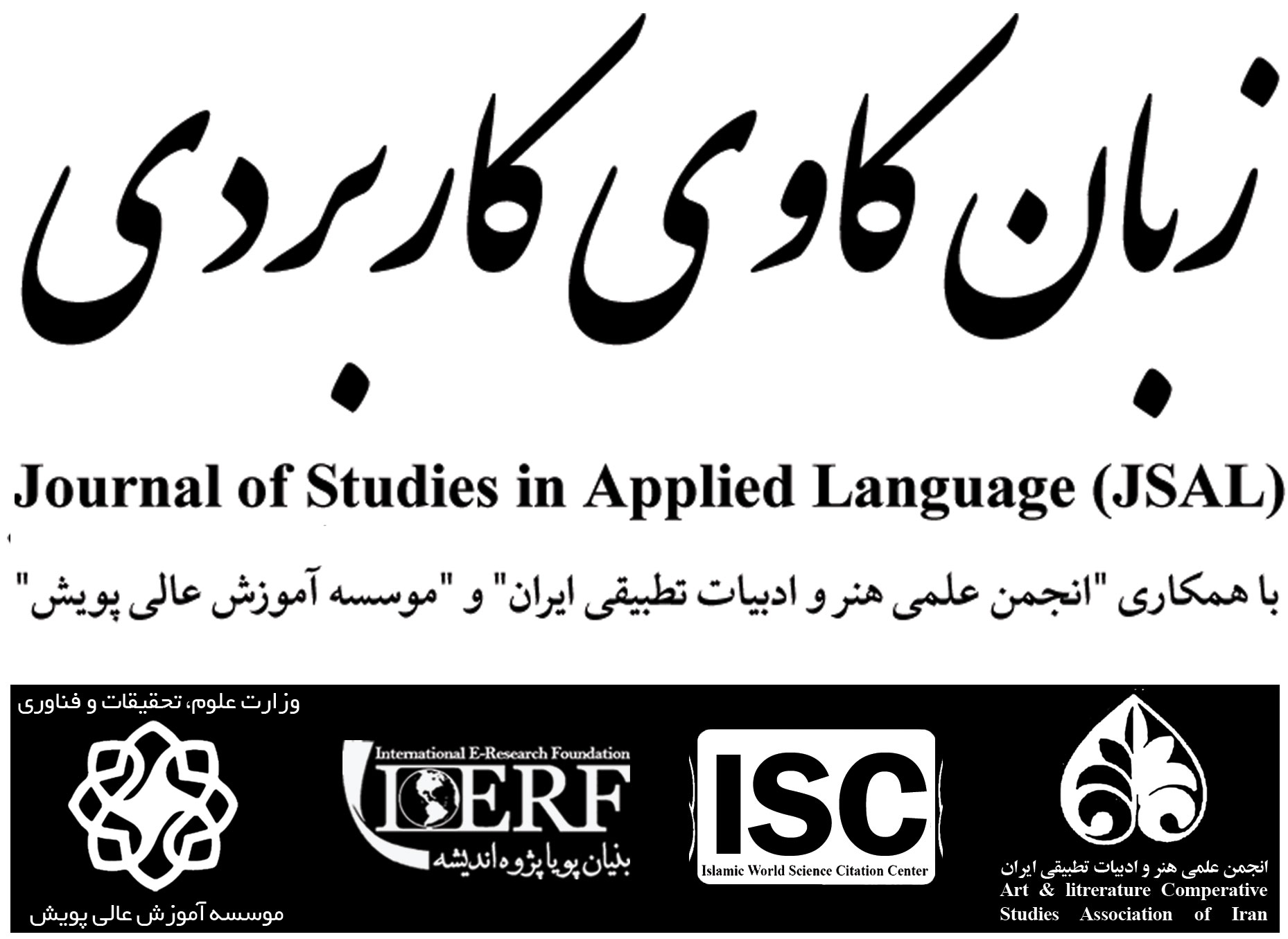<>
Volume 6, Issue 4 (11-2023)
JSAL 2023, 6(4): 123-142 |
Back to browse issues page
Download citation:
BibTeX | RIS | EndNote | Medlars | ProCite | Reference Manager | RefWorks
Send citation to:



BibTeX | RIS | EndNote | Medlars | ProCite | Reference Manager | RefWorks
Send citation to:
Shafiei Taban M. (2023). Narrative Analysis of "A Quiet Romance" Utilizing Gérard Genette's Theory [In Persian]. JSAL. 6(4), 123-142. doi:10.61186/jsal.6.4.123
URL: http://jsal.ierf.ir/article-1-109-en.html
URL: http://jsal.ierf.ir/article-1-109-en.html
Faculty member of Persian Language and Literature Department, Payam Noor University, Tehran, Iran , Shafieetaban_m@yahoo.com
Abstract: (4262 Views)
Narratology, a field within literary studies, focuses on analyzing narratives, narrative systems, story structures, and storytelling techniques. It aims to uncover the more profound meaning embedded within texts and enhance our understanding of narratives. Postmodern literature often challenges conventional notions of time and narrative in prose fiction. Nader Ebrahimi's "A Quiet Romance" exemplifies this type of narrative. This descriptive-analytical study examines "A Quiet Romance" through the lens of Gérard Genette's theory of narrative time. Genette, a prominent figure in structuralist narratology, emphasizes the significance of order, duration, frequency, focalization, and voice in describing and analyzing the structures of literary texts. The research findings reveal that "A Quiet Romance" exhibits strong coherence. However, deliberate temporal disruptions in the events add artistic depth to the story. These temporal disruptions are prevalent throughout the novel, with frequent shifts between the past and the present. The initial chapter primarily focuses on the past, incorporating retrospective elements contributing to a slower pace. In terms of duration, the surface layer of the novel follows the passage of days, creating a sense of positive acceleration and time omission. Conversely, the content layer of the story conveys a negative sense of acceleration. Dialogues, predominantly conveyed through the emotions and beliefs of the character "Gile Mard," form the narrative's core. The story often includes extended descriptive pauses, contributing to a slower narrative progression. Repetition and recounting are also prominent features of the narrative. Regarding focalization, the story utilizes two perspectives: an omniscient narrator and a first-person narrator, with the majority of the novel adopting the first-person viewpoint while the third-person perspective is sparingly employed.
Keywords: Discourse Analysis, Narratology, Novel Analysis, Gérard Genette, Nader Ebrahimi, A Quiet Romance
Type of Study: Research |
Subject:
Discourse Analysis
Received: 2022/06/30 | Accepted: 2023/04/7 | Published: 2023/11/1
Received: 2022/06/30 | Accepted: 2023/04/7 | Published: 2023/11/1
References
1. Ebrahimi, N., (1997). A quiet romance, Tehran: Rozbahan Publications.
2. Ahmadi, B., (1992). Structure and interpretation of the text, 2th edition, Tehran: Markaz Publications.
3. Eagleton, T., (1989). An introduction to literary theory, translated by: Abbas Mokhbar, 1th edition, Tehran: Center Publications.
4. Bertens, J., (2008). Literary theory, translation: Farzan Sojodi, 2th edition, Tehran: Ahange Digar Publications.
5. Pouralashti, H., Sattari, H., Reza; H., (2019). "Molavi's special skills and special style in the point of view of supporting the king's falling in love with a maid according to the theory of Gérard Genet", a specialized quarterly of the stylistics of Persian poetry and prose, pp. 353-374.
6. Tyson, L., (2008). Theories of Contemporary Literary Criticism, translated by: Maziar Hosseinzadeh and Fatemeh Hosseini, Tehran: Negah Imroz Publications.
7. Tolan, M., J. (2004) A critical-linguistic introduction to narration, translated by Abolfazl Harri, Tehran: Farabi Cinema Foundation Publications.
8. Ramon Kanan, S., (2007). Storytelling; Contemporary boutiques, translated by: Abolfazl Harri, Tehran: Nilufar Publications.
9. Selden, R., Widson, P., (2005), Guide to Contemporary Literary Theory, translated by: Abbas Mokhbar, 4th edition, Tehran: Tarhe nou Publications.
10. Fleki, M., (2008). Narrating the story (the basic theories of story writing), Tehran: Baztabe negah Publications.
11. Kaler, J., (2012). Literary theory, translation: Farzaneh Taheri, Tehran: Markaz Publications.
12. Guilmet, L., (2007). Narratology of Gherarjant, Literary Reading Quarterly, translated by: Mohammad Ali Masoudi.
13. Lechte, J., (2008). Fifty great contemporary thinkers from structuralism to postmodernism, translated by: Mohsen Hakimi, Tehran: Khujasteh Publications. [DOI:10.4324/9780203390573]
14. Makarik, I., (2004). Encyclopaedia of Contemporary Literary Theories, translation: Mehran Mohajer and Mohammad Nabavi, 1th edition, Tehran: Aga Publications.
15. Mirsadeghi, J., (2007). Fiction, 5th edition, Tehran: Sokhan Publications.
Send email to the article author
| Rights and permissions | |
 |
This work is licensed under a Creative Commons Attribution-NonCommercial 4.0 International License. |








